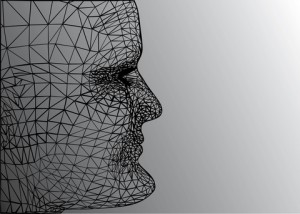 There are many strange and unknown phobias out there which are often misunderstood and sometimes used by the media as a means of promoting products and services. The latest phobia to hit the headlines is trypophobia which is a phobia of small holes in close proximity which many believe relates to skin conditions in early evolution. This particular phobia has been used to promote the new Apple Watch which has not received the kind of coverage the company might have hoped for bearing in mind its historic successes.
There are many strange and unknown phobias out there which are often misunderstood and sometimes used by the media as a means of promoting products and services. The latest phobia to hit the headlines is trypophobia which is a phobia of small holes in close proximity which many believe relates to skin conditions in early evolution. This particular phobia has been used to promote the new Apple Watch which has not received the kind of coverage the company might have hoped for bearing in mind its historic successes.
Is trypophobia a real phobia?
It is important to stress that trypophobia is a real and disturbing phobia of “irregular patterns of holes”. These are the type of patterns seen in beehives, ant hills and other similar circumstances which can lead to extreme discomfort and a physical impact in some sufferers. It is believed that the reaction to trypophobia is not based upon fear but upon revulsion of the image in front of the person.
When you look at the design of the new Apple Watch it is not difficult to see why many people are linking this with trypophobia. Like so many relatively unknown phobias it is easy to dismiss this as irrelevant but if you ask a sufferer they will explain the feelings of revulsion and how uncomfortable these images make them.
Is the media sensationalising phobias?
Many people would be forgiven for assuming that the likes of Apple and media outlets have used this particular phobia as a means of pushing a new product into the public domain. However, it is worth noting that the original complaints came via social media with many people expressing their concern about the design of the watch face. True, this particular episode may well have pushed trypophobia into the headlines, and inadvertently given Apple more exposure, but it is not particularly positive exposure?
There are many different extremes to this particular condition with individuals easily tested for mild, medium and extreme levels. The reality is that if you have ever suffered from this particular phobia you would know very quickly because there are instances of these uncomfortable images visible in our everyday lives.
Does evolution have a lot to answer for?
The more you delve deeper into the world of phobias the more it becomes apparent that many of the major phobias, and some of the less well-known conditions, do have their roots in early evolution. Even though a number of phobias have evolved with a very close connection to changes in society even these can in some circumstances be traced back to an unconscious fear of specific situations for the early human race.
It is also worth noting that each individual is said to be born with two specific phobias, a fear of heights and a fear of loud noises, as well as an inbuilt self defence mechanism. Trypophobia is believed to have evolved from an early fear of skin complaints/skin rashes which for many people would have developed into potentially serious illnesses in years gone by. So, while we cannot blame evolution for each and every phobia there are many links with the early years of the human race and our inbuilt self defence mechanism.






